Imagine walking across your lawn only to notice that your once lush, green grass feels spongy beneath your feet—or worse, is turning brown in random patches. This could be the work of lawn grubs, one of the most damaging and often overlooked pests in residential landscapes.
Lawn grubs, the larvae of various beetles such as Japanese beetles, June bugs, and European chafers, live beneath the soil and feed on grassroots. Left unchecked, they can destroy entire sections of turf, leaving costly damage and attracting other pests like raccoons, moles, and skunks who dig to eat them.
The good news? You can catch them early. In this article, we’ll cover how to identify, spot, and control lawn grubs before they turn your lawn into a patchy, brown mess.
What Are Lawn Grubs?
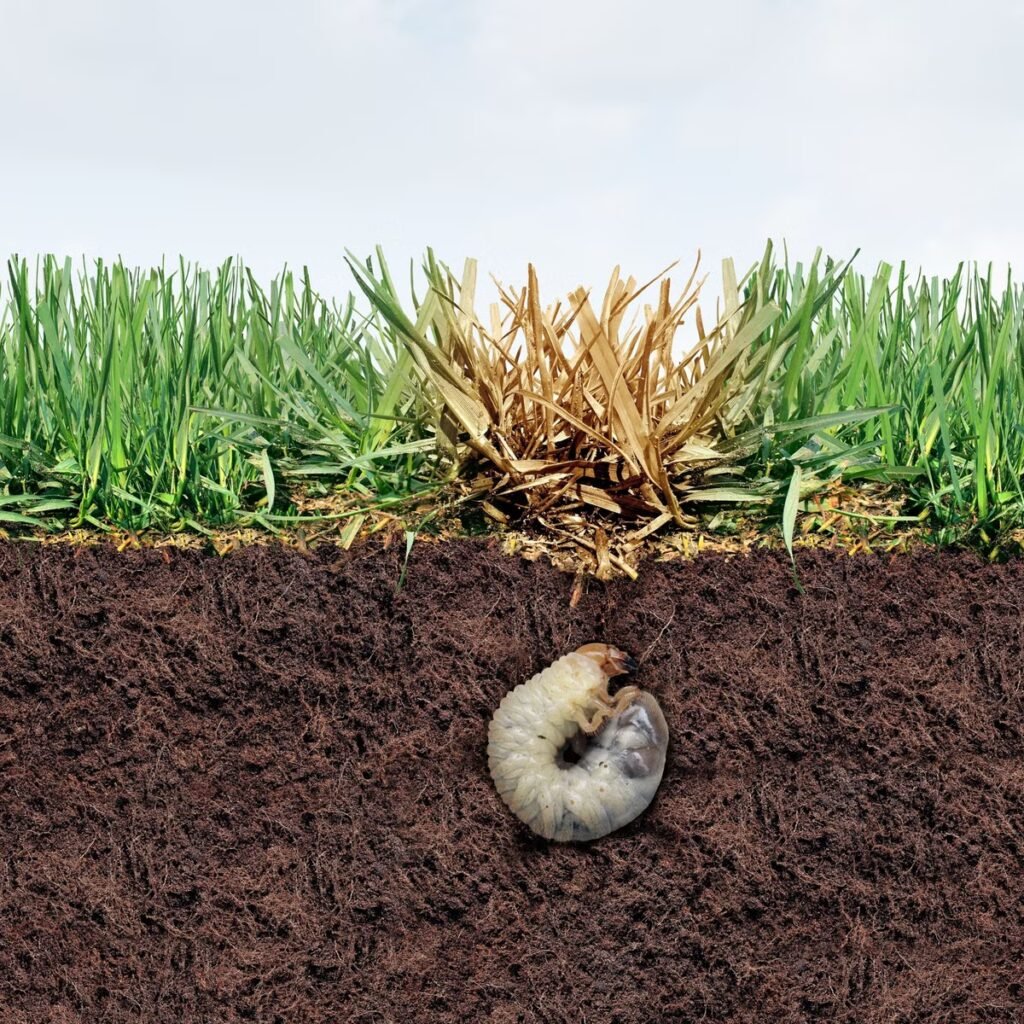
Lawn grubs are C-shaped, white larvae with soft bodies and a brownish head. They are typically ½ to 1 inch long and live just beneath the surface of your soil, feeding on grassroots, which provide your lawn with essential nutrients and anchorage.
These pests are the immature form of beetles. Common grub-producing beetles include:
- Japanese beetles
- June beetles
- European chafers
- Oriental beetles
Grubs typically emerge in late summer and early fall, feeding voraciously before overwintering underground and reemerging in spring to complete their life cycle.
Why Lawn Grubs Are So Damaging
While a few grubs won’t destroy your lawn, a large population (10+ per square foot) can severely impact turf health. As they chew on roots, your lawn loses its ability to absorb water and nutrients. This leads to:
- Browning or thinning patches
- Spongy or loose turf
- Increased water runoff and erosion
- Attraction of predators that dig up your yard
By the time you see visible damage, it’s often too late to reverse the worst of it—which is why early detection is key.
How to Spot Lawn Grubs Early
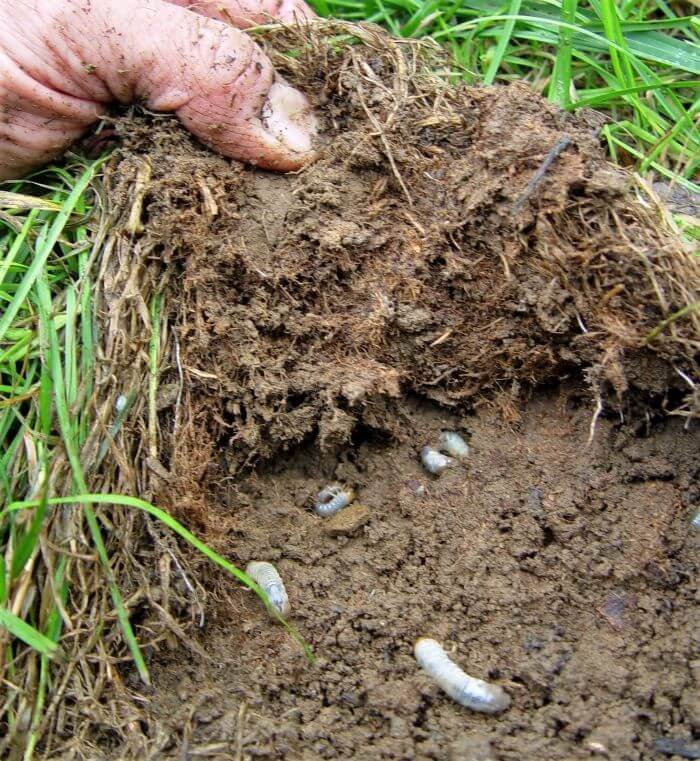
Here are the top early warning signs that your lawn may be under attack:
1. Irregular Brown Patches
- Small, brown or yellow patches may start appearing, particularly in late summer or early fall.
- These patches don’t improve with watering and gradually spread.
2. Spongy or Loose Turf
- The grass may feel soft and springy underfoot.
- If grubs have eaten the roots, you’ll be able to lift up the turf like a carpet with little resistance.
3. Increased Wildlife Activity
- Birds, raccoons, skunks, or moles suddenly digging in your yard?
- They’re likely feeding on grubs—a sign of infestation.
4. Wilting Despite Adequate Watering
- Grass wilts even though you’re watering regularly.
- Damaged roots can’t absorb moisture, so the grass looks drought-stressed.
5. Beetles in Summer
- A high number of beetles in June–July (especially Japanese beetles) may indicate a higher chance of grub problems later in the season.
How to Check for Grubs
If you suspect grubs, perform this simple DIY soil test:
Step-by-Step Grub Test:
- Choose a few areas of your lawn—especially near damaged patches.
- Use a shovel or spade to cut a 1 square foot section of turf about 2–4 inches deep.
- Gently peel back the turf and inspect the soil underneath.
- Count how many white C-shaped grubs you find.
0–5 grubs per sq. ft. = Low population, probably not a concern
6–9 grubs per sq. ft. = Watch closely, potential for damage
10+ grubs per sq. ft. = Likely to cause significant damage
Repeat in multiple locations to get an accurate picture.
When Are Grubs Most Active?
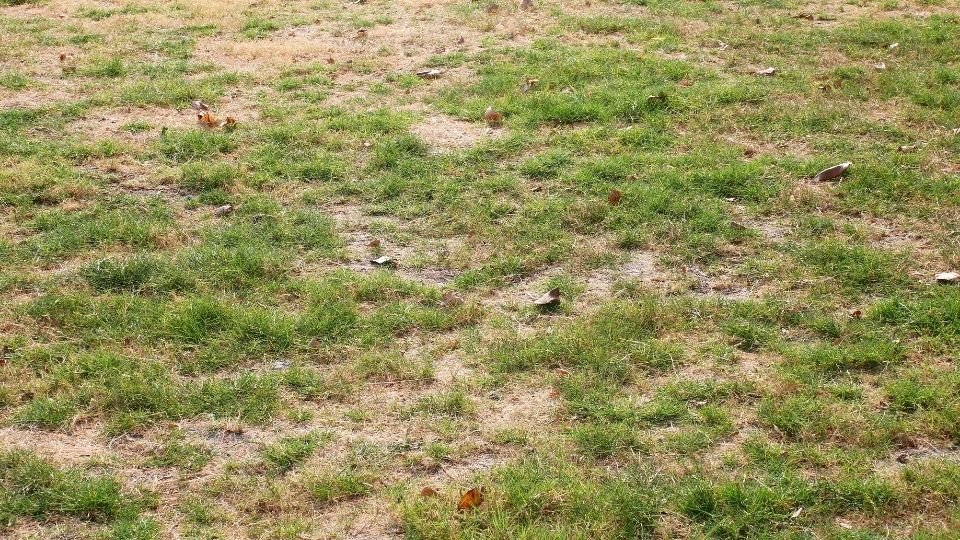
Understanding their life cycle helps in both spotting and controlling them.
Lawn Grub Life Cycle:
- Late Spring to Early Summer: Beetles emerge, mate, and lay eggs in the soil.
- Mid to Late Summer (July–September): Eggs hatch into larvae (grubs), which begin feeding heavily on roots.
- Fall: Grubs burrow deeper to overwinter.
- Spring: They resurface, feed briefly, then pupate into beetles.
Best time to inspect and control grubs: Late summer to early fall, when they are near the surface and actively feeding.
How to Prevent Lawn Grubs
1. Maintain a Healthy Lawn
- Keep your grass well-fertilized and watered.
- Healthy turf is more resistant to grub damage and recovers faster.
2. Don’t Overwater
- Beetles prefer to lay eggs in moist soil.
- Avoid excessive watering in July and August when beetles are active.
3. Mow Higher
- Taller grass discourages beetles from laying eggs.
- Maintain a mowing height of 3 to 4 inches during peak beetle season.
Natural and Organic Grub Control
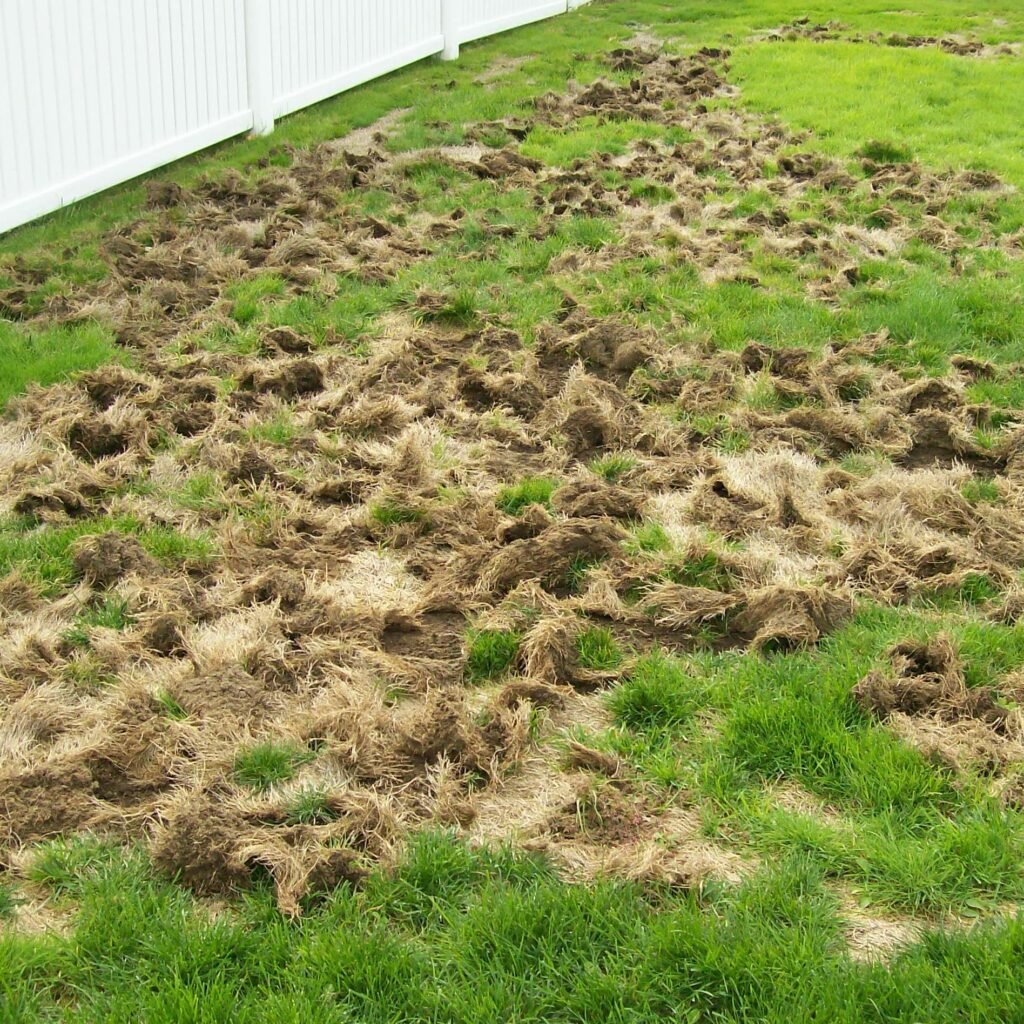
If you’ve spotted grubs, act quickly. Here are eco-friendly methods recommended by lawn experts:
1. Beneficial Nematodes
- These microscopic worms attack and kill grubs.
- Best applied in late summer to early fall, when grubs are near the surface.
- Water the lawn before and after application.
2. Milky Spore Disease
- A natural bacteria (Bacillus popilliae) that targets Japanese beetle grubs.
- Safe for humans, pets, and beneficial insects.
- Takes 1–2 years to establish but offers long-term protection for up to 10 years.
3. Neem Oil
- An organic pesticide that disrupts grub growth and feeding.
- Apply during the early grub stage (late summer).
- Also repels adult beetles.
Chemical Grub Control (Use Sparingly)
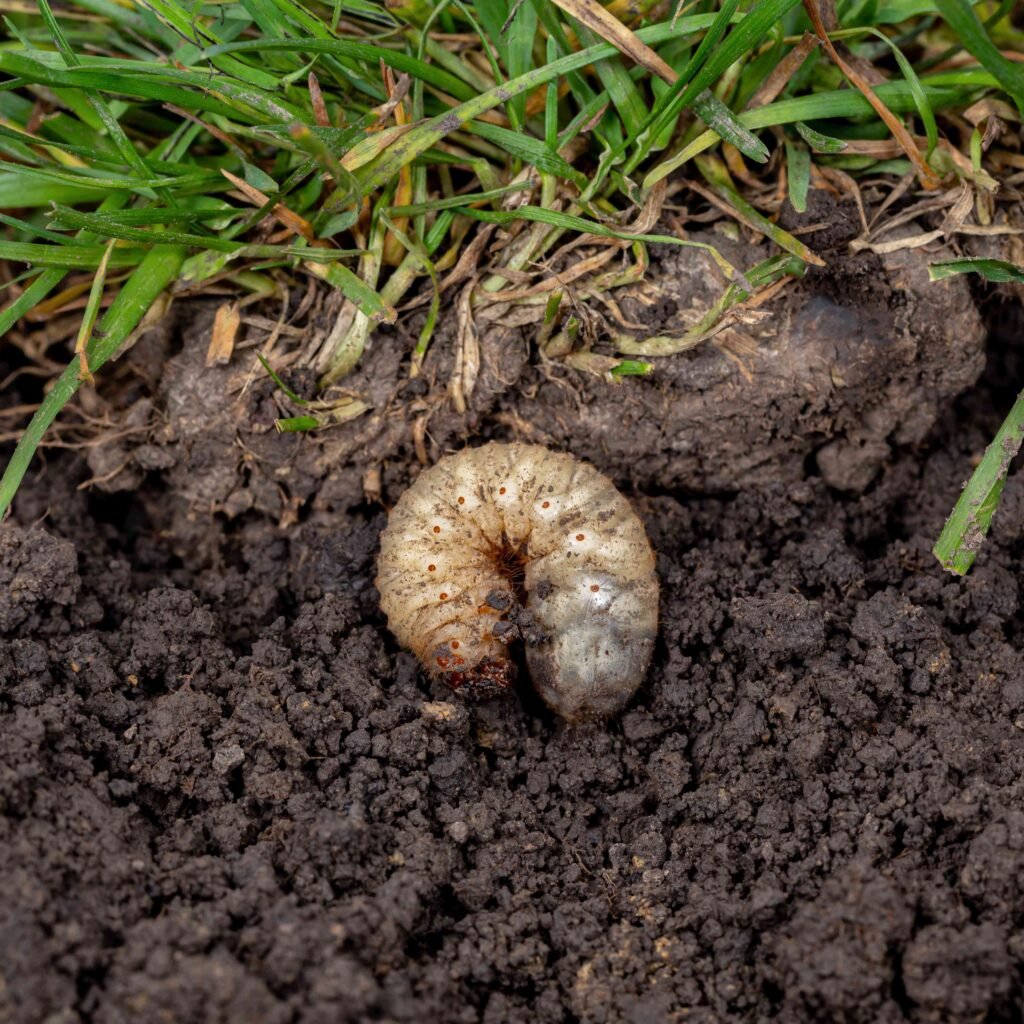
If infestation is severe and natural methods aren’t enough, consider chemical treatments—but choose products carefully.
Preventive Insecticides
Apply in early to mid-summer before grubs hatch:
- Imidacloprid
- Chlorantraniliprole (safer for bees and non-target insects)
Curative Insecticides
Use in late summer or early fall if grubs are already present:
- Carbaryl
- Trichlorfon
Important: Always follow label instructions and avoid applying chemicals near water sources or pollinator habitats.
After Treatment: Lawn Recovery Tips
If grubs have already damaged your lawn, follow up with these steps:
- Rake and remove dead patches
- Aerate to loosen compacted soil and promote root growth
- Topdress with compost to improve soil health
- Overseed with a hardy grass blend in early fall or spring
- Water deeply and consistently to support new roots
Common Grub Myths Debunked
- Myth: All white grubs are bad
Fact: Some white larvae are harmless (like those of green June beetles). Proper identification is key. - Myth: You should treat for grubs every year
Fact: Only treat when grub counts are high. Overuse of insecticides can harm soil health. - Myth: Grub damage happens in spring
Fact: Most damage occurs in late summer and fall, not spring.
Conclusion
Lawn grubs may be small, but their impact can be massive—especially when they go unnoticed. By learning to recognize early warning signs, conducting soil inspections, and responding proactively, you can spot and stop grubs before they destroy your grass.
Whether you choose natural controls like nematodes and milky spore, or reserve chemical treatments for emergencies, a vigilant and informed approach will help you maintain a beautiful, green lawn—grub-free.
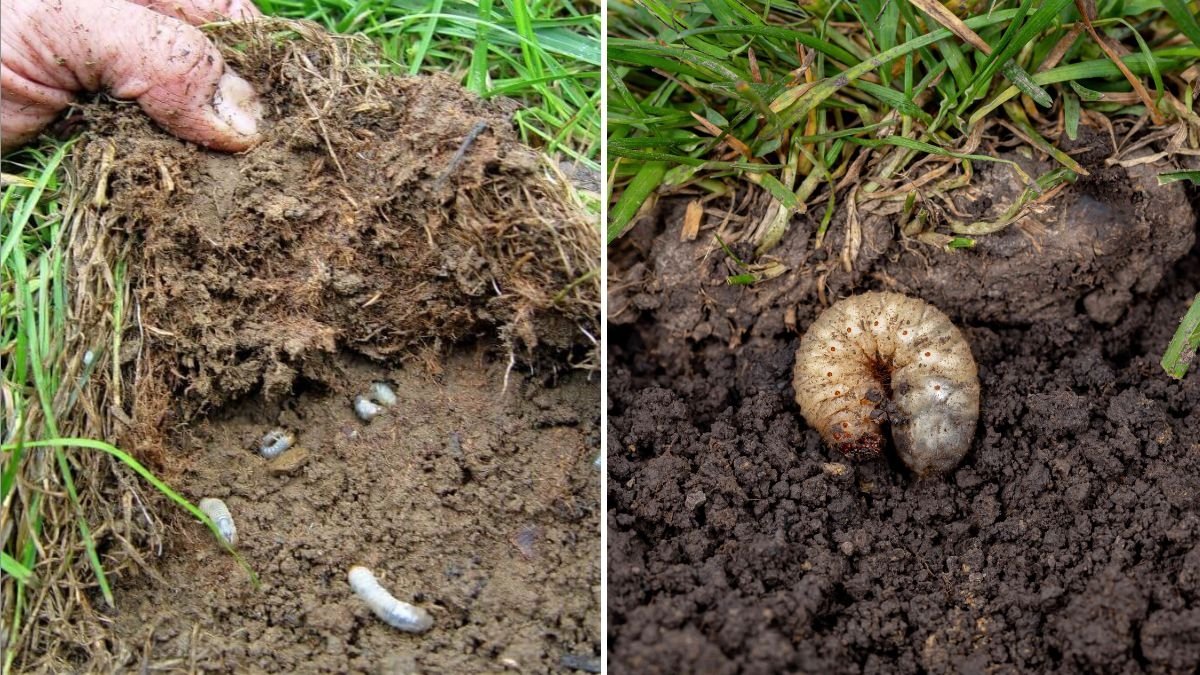
Leave A Comment